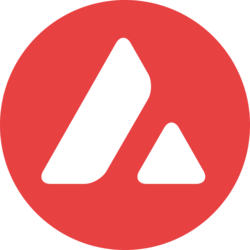The Role and Impact of Cross-Chain Bridges in the Cryptocurrency World
Introduction:
The rapid expansion of the cryptocurrency market has led to the emergence of various blockchain networks, each with its own unique features and functionalities. However, interoperability between these networks has remained a challenge, hindering the seamless transfer of assets and data across different blockchains. In response to this challenge, cross-chain bridges have emerged as a crucial innovation in the cryptocurrency world. These bridges facilitate the interoperability between disparate blockchain networks, enabling the transfer of assets and data across different chains. In this article, we will explore the role and impact of cross-chain bridges in the cryptocurrency world.

Understanding Cross-Chain Bridges:
Cross-chain bridges are protocols or platforms designed to establish connections between different blockchain networks. They act as intermediary channels that facilitate the seamless transfer of assets and data between disparate blockchains. By bridging the gap between different blockchain networks, cross-chain bridges enable users to access a wider range of assets and services, thereby enhancing liquidity and interoperability in the cryptocurrency ecosystem.
How Cross-Chain Bridges Work:
Cross-chain bridges typically operate through a combination of smart contracts, oracles, and cryptographic algorithms. When a user initiates a cross-chain transaction, the bridge locks the assets on the originating blockchain and generates a corresponding representation of those assets on the destination blockchain. This representation, known as a wrapped asset, is pegged to the original asset and can be freely transferred and traded within the destination blockchain network. Once the transaction is complete, the wrapped asset can be redeemed for the original asset on the originating blockchain.
Benefits of Cross-Chain Bridges:
1. Interoperability: Cross-chain bridges enable interoperability between different blockchain networks, allowing users to transfer assets and data seamlessly across disparate chains.
2. Liquidity: By connecting multiple blockchain networks, cross-chain bridges enhance liquidity by enabling users to access a wider range of assets and services.
3. Scalability: Cross-chain bridges can help alleviate scalability issues by allowing users to leverage the resources of multiple blockchain networks.
4. Risk Mitigation: Cross-chain bridges reduce counterparty risk by providing a secure and transparent mechanism for transferring assets between different blockchains.
Use Cases of Cross-Chain Bridges:
1. Decentralized Finance (DeFi): Cross-chain bridges play a crucial role in the decentralized finance ecosystem by enabling the seamless transfer of assets between different DeFi protocols and platforms.
2. Asset Tokenization: Cross-chain bridges facilitate the tokenization of real-world assets by allowing users to represent physical assets on different blockchain networks.
3. Cross-Border Payments: Cross-chain bridges enable cross-border payments by allowing users to transfer digital assets between different blockchain networks, bypassing traditional financial intermediaries.
4. Blockchain Interoperability: Cross-chain bridges promote blockchain interoperability by facilitating communication and data exchange between disparate blockchain networks.

Challenges and Limitations:
Despite their many benefits, cross-chain bridges also face several challenges and limitations. These include:
1. Security Risks: Cross-chain bridges introduce security risks, such as the potential for smart contract vulnerabilities and oracle manipulation.
2. Complexity: Implementing cross-chain bridges can be complex and require careful coordination between different blockchain networks.
3. Centralization: Some cross-chain bridges rely on centralized intermediaries, which can introduce single points of failure and undermine the decentralized nature of blockchain networks.
4. Regulatory Uncertainty: The regulatory landscape surrounding cross-chain bridges is still evolving, which may pose challenges for their widespread adoption and usage.
Future Outlook:
Despite the challenges, the future outlook for cross-chain bridges is promising. As the cryptocurrency market continues to mature, cross-chain bridges are expected to play an increasingly important role in facilitating interoperability and scalability in the blockchain ecosystem. With ongoing innovation and development, cross-chain bridges have the potential to unlock new opportunities and drive further growth and adoption in the cryptocurrency world.
Conclusion:
In conclusion, cross-chain bridges represent a significant innovation in the cryptocurrency world, enabling interoperability and scalability between disparate blockchain networks. By bridging the gap between different chains, cross-chain bridges enhance liquidity, facilitate cross-border payments, and promote blockchain interoperability. While challenges remain, the future outlook for cross-chain bridges is promising, with the potential to unlock new opportunities and drive further growth and adoption in the cryptocurrency ecosystem.
Asiasignal has collected the Best trading view indicators for the crypto for you.stay with us.

















Comments